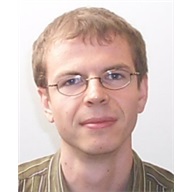To measure air quality, accurate mapping is a necessity. Local sources, such as traffic, can lead to large differences in the concentration of certain pollutants. VITO’s air quality measurements and model calculations provide reliable spatial air quality monitoring. Governments can use that information to reduce high concentrations or promote the use of green areas.
Black carbon
A growing number of cities and municipalities want to know where the highest concentrations of black carbon occur. Traffic might be an important local cause. But the environment also determines the degree to which emissions affect local air quality. The distance from the source and the degree to which dilution is possible play an important part. Conventional measurements are useful for longer time series, but are generally limited to one or a few locations. That is why VITO developed an accessible and easy-to-use alternative: airQmap.
Bart Elen of VITO says:
Using this tool, we can chart black carbon emissions in several streets. Cities and municipalities can loan measuring devices from us and use them to measure the black carbon emissions. At set times, volunteers must travel along pre-determined routes by bike or on foot. We process the data and turn them into interactive colour maps that can be freely consulted online.
A useful exercise, because the black carbon concentrations differ strongly between streets. Bart Elen: “For example, the concentrations are higher in places where traffic cannot maintain a constant speed, such as at traffic lights or speed bumps.
7 cities and municipalities
Since its launch in 2015, airQmap has been used successfully in seven cities and municipalities: Kortrijk, Antwerp, Zutendaal, Beringen, Brussels, Liège and Amsterdam. Gerda Flo, programme director of Climate City Kortrijk, recounts: “AirQmap was received enthusiastically by many of our citizens. We quickly found volunteers and the maps were frequently consulted. With the results of the measurements, we will now take further action.”
AirQmap was received enthusiastically by many of our citizens. We quickly found volunteers and the maps were frequently consulted. With the results of the measurements, we will now take further action.


